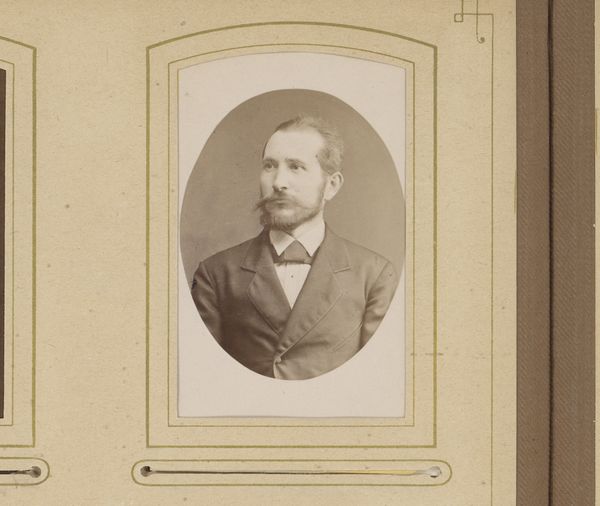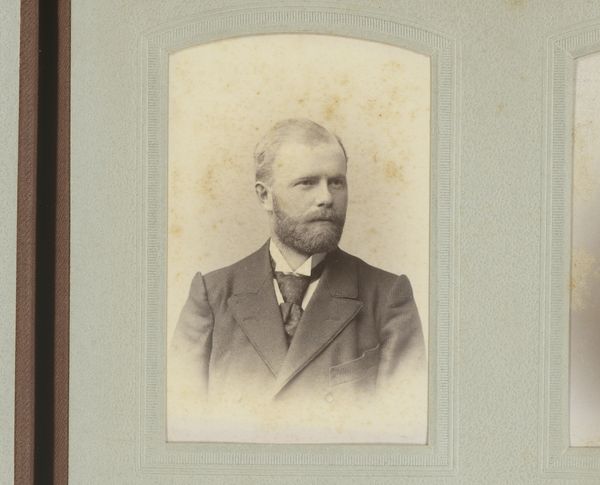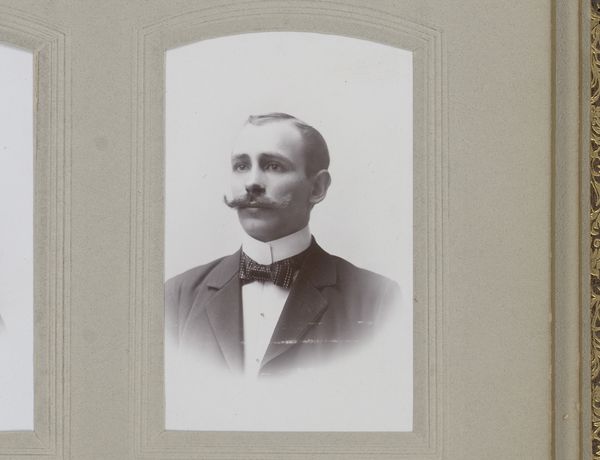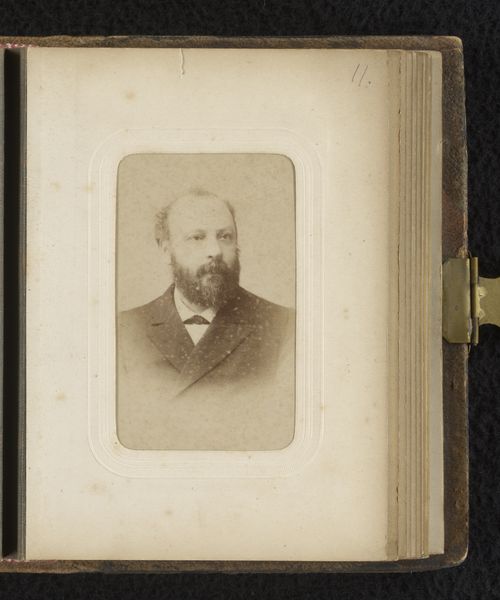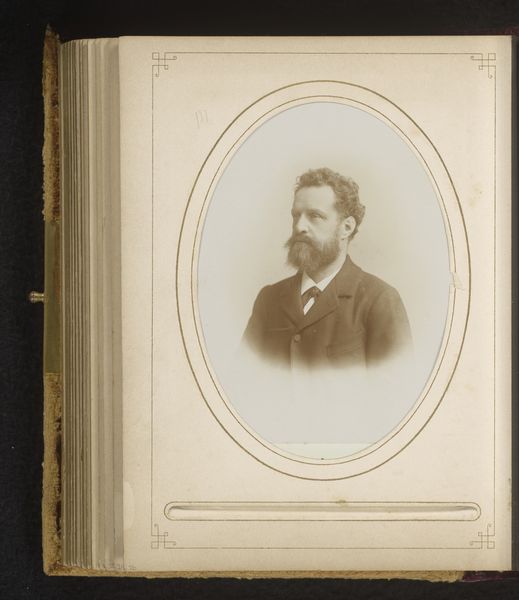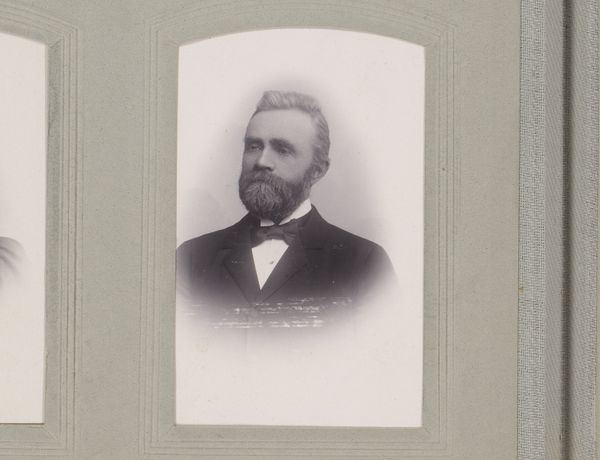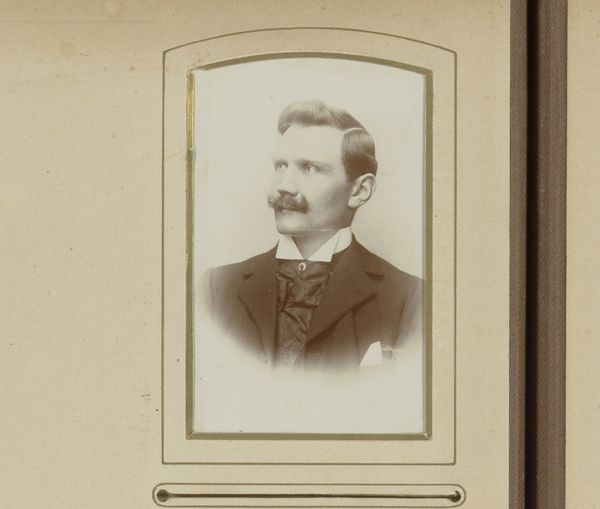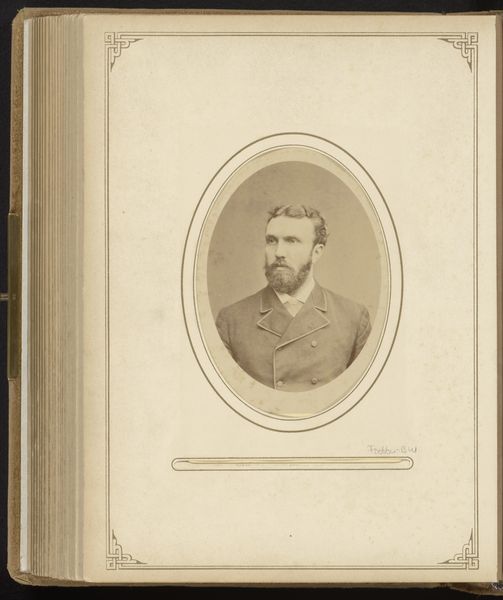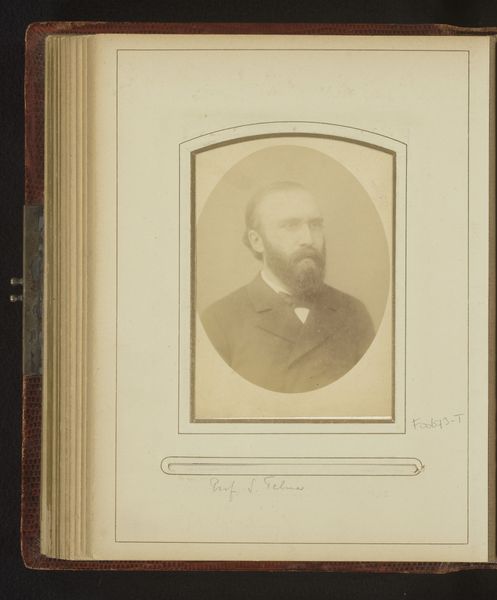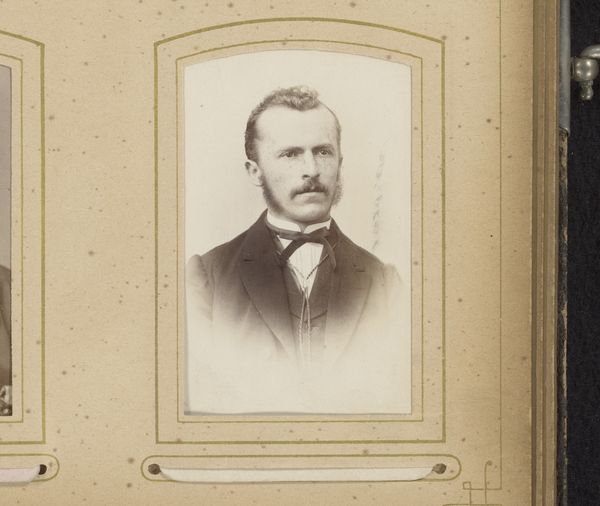
photography, albumen-print
#
portrait
#
charcoal drawing
#
charcoal art
#
photography
#
genre-painting
#
charcoal
#
albumen-print
#
realism
Dimensions: height 84 mm, width 54 mm
Copyright: Rijks Museum: Open Domain
Curator: Looking at this albumen print from around 1890 to 1910, titled "Portret van een man," it’s difficult not to be drawn into the sitter’s gaze. The photographers are W.G. Kuijer & Zonen. Editor: He certainly does command attention. My initial reaction is one of somberness; a reserved, perhaps even melancholic character. The sepia tones add to that feeling. Curator: I find myself wondering about the chemical processes used to achieve this particular sepia tone and how readily available they would have been at the time. The materiality and production aspect of photography back then…it really highlights the labor and resources invested in image-making. Editor: Absolutely. Consider the burgeoning middle class during this period, eager to participate in the cultural rituals of portraiture. These studios provided that opportunity and reinforced social structures. Curator: Speaking of reinforcement, it is all carefully manufactured. The backdrop is plain, to really centre his features. His carefully groomed beard, the neat cut of his jacket and bow tie, all convey respectability. Editor: Exactly! The Realist aesthetic served specific socio-political purposes. Representing sitters with apparent honesty. Yet it subtly reinforces prevailing standards of appearance and class. Curator: I wonder about the context of this image within the broader output of W.G. Kuijer & Zonen. Were they documenting local dignitaries, capturing a range of social classes? The studio’s role as chronicler and producer of social imagery must have been incredibly significant. Editor: Undeniably. By examining how the photograph circulated - perhaps within family albums or displayed publicly - we gain a richer understanding of its impact on identity formation. This portrait exists now as a valuable historical record. Curator: Indeed. Considering the craftsmanship involved, this print offers a fascinating insight into how photographic studios balanced artistry, social demands, and industrial process during this transitional period. Editor: Ultimately, beyond the material and the historical context, it is hard to ignore that powerful gaze which endures across the decades, prompting reflections on ourselves and our place in the flow of history.
Comments
No comments
Be the first to comment and join the conversation on the ultimate creative platform.

